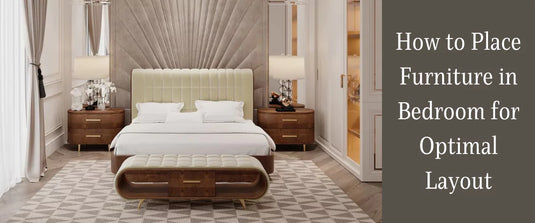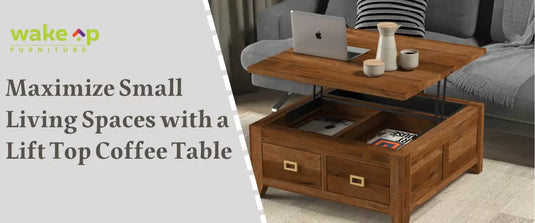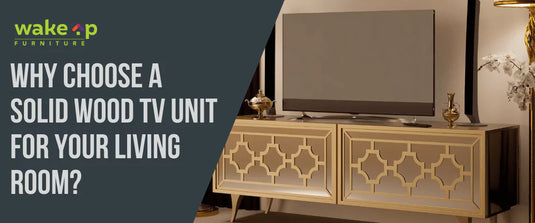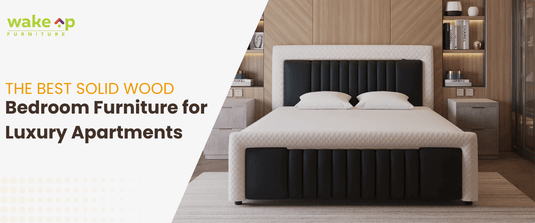Your bedroom should be a sanctuary—a place where comfort and aesthetics coexist. However, achieving this balance often hinges on how well you arrange your bedroom furniture. This blog will provide valuable insights and practical tips on "how to place furniture in bedroom," making the most out of your space and enhancing your overall living experience. We'll guide you through best practices, considerations for your unique room, and creative layout ideas. By the end, you’ll be inspired to transform your bedroom into a harmonious haven.
Best Practices for Arranging Bedroom Furniture
Tips for Arranging Furniture in a Rectangular Room
When dealing with a rectangular room, placing furniture strategically can make all the difference. Start by identifying the focal point of the room. This is often the bed, but it could also be a large window or an attractive piece of artwork. Positioning your bed along the longest wall can help open up the space, allowing for better movement and functionality.
Utilize the narrow ends of the room for smaller furniture pieces like dressers or small seating arrangements. This approach maximizes the central space, making the room feel more open and less cluttered. Additionally, make sure to leave enough room for walking paths, ensuring that the layout doesn’t obstruct flow.
Another tip is to use area rugs to define different sections within the rectangular room. Placed under the bed or seating area, rugs can create a sense of specific zones, adding both visual interest and functional separation.
Guidelines on Placing the Bed for Optimal Space and Visual Appeal
The bed is often the centerpiece of the bedroom, and its placement sets the tone for the entire room. When considering "how should a bed be placed in a room," several factors come into play. Ideally, place your bed against a solid wall, preferably one without windows. This position offers stability and provides a clear view of the door, contributing to a sense of security.
If space allows, leave ample room on either side of the bed for nightstands. This setup not only adds symmetry but also provides additional storage and convenience. For those with limited space, consider floating shelves as alternatives to traditional nightstands.
It’s also essential to consider the height of the bed in relation to other furniture. A bed that’s too high or too low can disrupt the room’s visual balance. Aim for a proportionate height to maintain a cohesive look.
Suggestions for Positioning Wardrobes, Dressers, and Nightstands
Knowing "how to place wardrobe in bedroom" and other essential furniture is crucial for a balanced layout. Wardrobes should ideally be placed along walls that won’t block light or obstruct pathways. If possible, utilize built-in wardrobes to save space and create a streamlined look.
Dressers can be positioned against walls opposite the bed or near the room’s entrance. This location makes them easily accessible without disrupting the room’s flow. Ensure there’s enough space for drawers to open fully without hitting other furniture.
Nightstands are best placed on either side of the bed, providing a spot for lamps, books, and other nighttime essentials. Choose nightstands that complement the bed’s height and style for a harmonious look.
Factors to Consider
Room Size and Dimensions
The first step in arranging bedroom furniture is understanding your room’s size and dimensions. Measure the length and width of the room, as well as the height of any windowsills and the distance between doors and corners. These measurements will help you choose appropriately sized furniture and avoid overcrowding.
For small rooms, opt for furniture that serves multiple purposes, such as beds with storage drawers underneath or wardrobes with built-in mirrors. In larger rooms, you have the freedom to create distinct zones for sleeping, dressing, and perhaps even a small seating area.
Always keep in mind the principle of scale; oversized furniture can overwhelm a small room, while tiny pieces can appear lost in a larger space.
Natural Light and Airflow
Natural light and airflow play significant roles in creating a comfortable and inviting bedroom. Position your bed and other large pieces of furniture to maximize the amount of natural light entering the room. Avoid blocking windows with bulky wardrobes or dressers, as this can make the room feel dark and cramped.
Consider how airflow affects the room’s atmosphere. Placing the bed near a window might offer a refreshing breeze at night, but be mindful of potential drafts. Similarly, ensure that air vents and radiators are not obstructed by furniture, allowing for optimal temperature control year-round.
Personal Preferences and Lifestyle
Your bedroom should reflect your personal style and accommodate your lifestyle. Think about how you use the space daily. Do you need a quiet corner for reading or a spacious area for morning yoga? Tailor your furniture arrangement to meet these needs.
If you share the bedroom with a partner, take into account both of your preferences. Ensure that both sides of the bed are easily accessible and provide enough storage for two people. Personal touches, such as favorite colors and cherished decor items, can also make the bedroom feel uniquely yours.
Creative Ideas for Unique Bedroom Layouts
Utilizing Corners and Underutilized Spaces
Corners and underutilized spaces often go to waste, but with a bit of creativity, they can become functional parts of your bedroom. Consider placing a cozy chair in a corner to create a reading nook or adding a small desk for a workspace. These additions not only make use of otherwise neglected areas but also add character to the room.
Under-bed storage is another excellent way to maximize space. Use bins or drawers to store seasonal clothing, shoes, or extra bedding. This approach keeps your belongings organized and easily accessible without taking up additional floor space.
Incorporating Multi-Functional Furniture for Small Spaces
For small bedrooms, multi-functional furniture is a game-changer. Look for beds with built-in storage, foldable desks, and convertible sofas. These pieces serve multiple purposes, saving space and reducing clutter.
Murphy beds, which fold up into the wall when not in use, are perfect for maximizing floor space in small rooms. Similarly, ottomans with hidden storage can double as seating and a place to stash blankets or magazines.
Balancing Practicality with Style
While functionality is essential, style should not be compromised. Choose furniture that complements your room’s decor and reflects your taste. A balance of practicality and aesthetics ensures that your bedroom is not only functional but also visually appealing.
Mix and match different textures, colors, and materials to create a unique look. For example, pair a sleek, modern bed frame with a rustic wooden dresser for an eclectic vibe. Add decorative elements like throw pillows, rugs, and artwork to inject personality into the space.
Visual Examples and Case Studies
Before and After Photos of Bedroom Arrangements
Seeing is believing. Before and after photos can provide inspiration and showcase the dramatic impact of thoughtful furniture arrangement. Look for images that highlight various room sizes and styles, demonstrating how different layouts can transform a space.
Notice the placement of key furniture pieces and how they interact with each other. Pay attention to details like lighting, color schemes, and accessories. These visual cues can help you recreate similar looks in your own bedroom.
Success Stories of Improved Sleep and Living Space
Real-life success stories offer valuable insights into the benefits of well-arranged furniture. For instance, one couple reported improved sleep quality after repositioning their bed away from a drafty window and adding blackout curtains. Their room felt more serene, leading to better rest.
Another homeowner found that incorporating a seating area in their spacious bedroom created a cozy retreat for reading and relaxation. These anecdotes underscore the importance of aligning furniture placement with personal needs and preferences.
Arranging bedroom furniture is both an art and a science. By considering factors like room size, natural light, and personal preferences, you can create a space that is both functional and beautiful. Explore creative layout ideas, utilize underutilized spaces, and balance practicality with style to make the most of your bedroom.
Ready to transform your sleep space? Share your tips and experiences in the comments below, and don't forget to explore our related articles for more inspiration.




